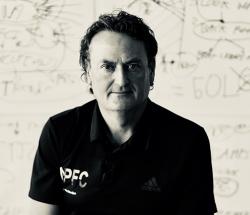Part II: Breaking Down The Veins of Positional Play
Albert Puig is a former FC Barcelona Youth Technical Director and now the Assistant Coach of New York City FC. A globally respected leader in player development, Puig’s famed La Masia developed the likes of Andres Iniesta, Gerard Pique, and Lionel Messi. Puig is the founder of APFC Courses – a program to help educate soccer coaches.
This is the second of Albert Puig’s 3 part series in which he breaks down positional play:
Read: ALBERT PUIG ON CRASH COURSE ON POSITIONAL PLAY – Part 1and ALBERT PUIG ON CRASH COURSE ON POSITIONAL PLAY – THE BRAINS (Part 3)
After the first article of this 3 part series, you should be familiar and have a general sense of what positional play is.
By using a certain playing structure starting at my own third of the field, I must resolve the numerical advantage in order to create a new numerical superiority at progression zone (⅔ of the field) to, eventually, come to an equal number situation at the final third (the other team’s box).
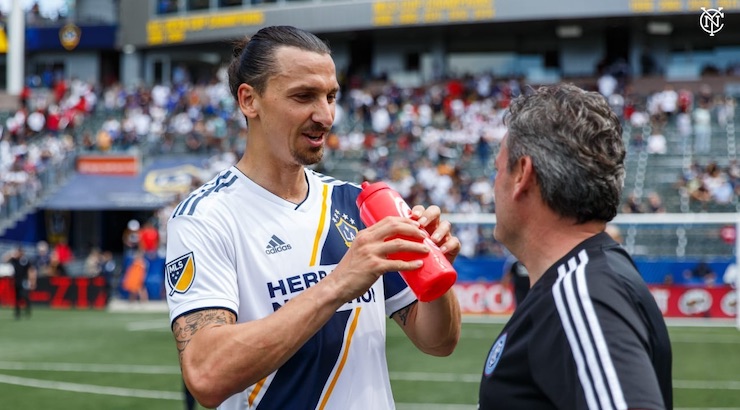
This is the main idea. The 3 elements:
- my players,
- the positions and
- the field of play or zones.
Everything together in order to reach the opponent’s box in the best possible way to score.
We will use the example of a body to conceptualize positional play. What was mentioned above, the concept of building zones is the bone structure of the positional play.
Read: Interview with ALBERT PUIG on the BIGGEST CHALLENGES IN TRAINING COACHINGS
But for a body to function, we all need blood flowing through veins. A well-structured system of vessels to reach every single part of our body.
Building zones requires the same.
The general idea is brilliant, but the player needs to fill it with more details; more concepts. Veins that provide building zones with further mechanisms to achieve the target of moving the ball closer to the opponent’s box.
We will now talk about all the concepts which add on top of the main idea of building zones. Building zones give us the purpose and, more importantly, show us the direction but it doesn’t give us the how.
Think about it. Once we know what to do — transfer the advantage from our initial third to the opponent’s initial third, where to go — opponent’s box) and why to go —we must score, the next step is to know how to do it.
And this is actually the real challenge.
We can move the ball forward by using a pass but we could also dribble. We don’t really know how
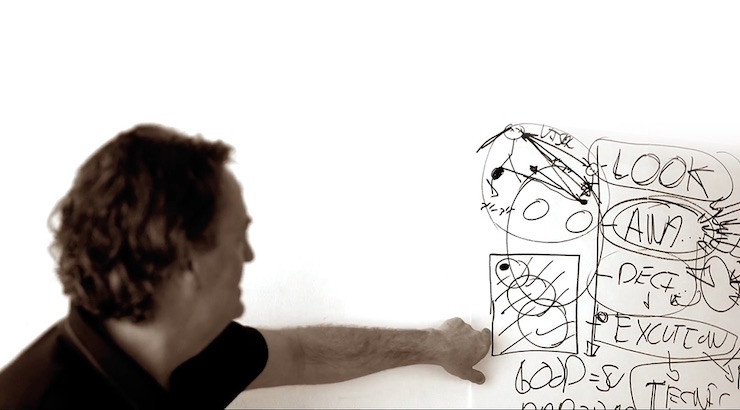
Let’s come back to the analogy of the body and the blood. What is the only characteristic that defines the blood? What is its unique and intrinsic differentiator?
The blood never stops flowing and so should the ball.
Once the team and players grasp the concept of building zones, they must ensure that the ball never stops moving. If we never stop the ball, if the blood never stops circulating, we will find the right vessel to reach that particular place and eventually move the ball forward following the idea of building zones.
In order to move the ball, the players need to have additional concepts encoded in their DNA. They need the vessels. If they lack these additional concepts, it’s highly unlikely for them to be able to positionally play soccer. We will enumerate them below:
- The first and most important concept (if there is a list of importance) that will help the ball circulate, is head up. Head up. As you have previously learned, head up is the first and most important tool for any player to move the ball forward. Head up helps the player understand that if there is no coverage she/he is free to go or if pressed, to come back.
- Body profile. this powerful concept is connected to head up. If the player, whether in possession of the ball or not, shows the right body profile, head up will be even easier to execute. With the body profile, the player must be positioned in such a way that makes it possible to see as many players (teammates and opponents), the ball and the other team’s box in the field of view.
- Play what you see: If for any reason, the player’s body profile is not right and the player isn’t getting that field of view mentioned before, it’s crucial to play soccer following the concept of “play what you see”. “Play what you see”, and its related concept called “never turn”, are very important in order to avoid situations where the ball can be lost.
- If the player isn’t able to use head up and lacks the right body profile — thus not being able to determine if progressing to zone 2 is possible, then the player must not attempt to turn towards that blind angle. There is no need nor sense in playing the ball in a direction where we have not collected information from.
- That is why “play what you see” and “never turn” become crucial in positional play.
Free man : So now, our players understand the need to play with the head up, showing the right body profile and they are highly aware that they must always play towards the direction where they have gathered the most information from. If we are in zone 1, and we are searching for a numerical advantage we must teach our players to find teammates that give us that advantage. In other words, we must teach our players to findthe free man.- In relation to the previous article, we would teach them to find that +1 at our own initial third of the pitch. The concept of “free man” becomes yet another tool for our players to fill the vessels.
- Once we are at the point where the players have played to the free man, the question is now different. Should the player pass the ball forward to progression zone or dribble towards it? Here, there is no one answer because it depends greatly on what are our intentions as a team is.
- Let’s keep in mind that there are binding concepts such as “back foot” and “break the lines” which are essential to pass the ball forward into progression zone.
- Switch fields: Each zone, each part of the body, has its particular concepts. When the ball is already in progression zone, after we have resolved the numerical advantage at our initial third, the context opens up as a battlefield, where both teams have an equal number of players and the time to play is less.
- At this moment, we should teach our players the importance of “switch fields” in order to move the ball from one channel, where no space is available, to the opposite side of the pitch, where progression to the last third is viable.
- We should never switch the ball to the other side if we have not been able to first attract the defenders to the current location of the ball.
- Invite the pressure: The best way to attract the defenders to our current position is by “inviting the pressure and then release the pass”. Another concept that appears to be important while trying to figure out all our possibilities in zone 2.
- Once we are in zone 3, in or near the opponent’s box there are other concepts needed. It will be crucial for our players to understand how to resolve “2vs1 offensive”, “1vs1 offensive”, perform a “penetration” pass or even how to use the flanks in order to execute a “forward or back cross”.
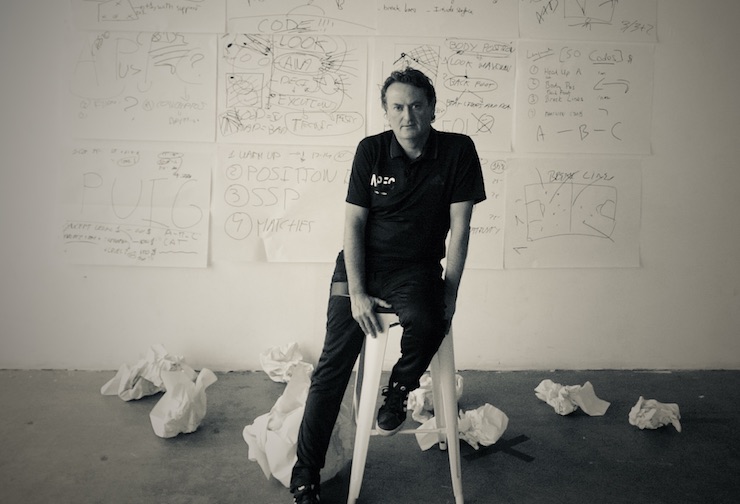
Little by little, our players (individually and collectively) have begun to understand where they are on the pitch, where they want to go and how to do it.
The only thing we as coaches must do is fill their heads with concepts.
Building zones, which is the backbone of positional play, is now filled with veins that have blood flowing through them. We are slowly but surely filling up this body.
It is very important to understand that these individual concepts might vary slightly depending on the position of the players. It is then when these individual concepts or principles become individual principles per position. Some of these individual principles will also involve several players at the same time. It’s then when these individual principles become team fundamentals.
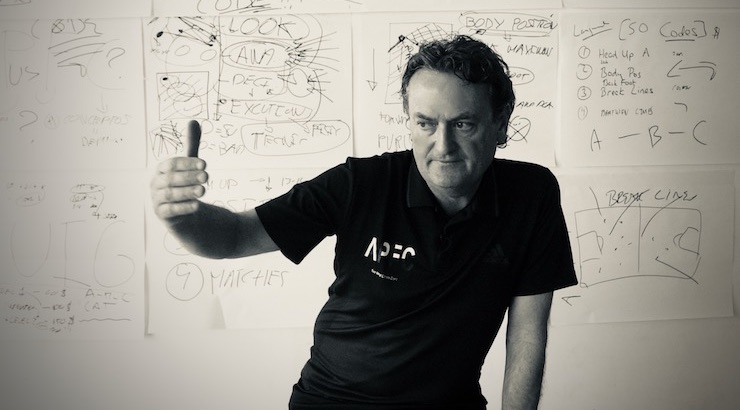
I could rant about these concepts for hours, but for time’s sake, I’m keeping it as short as possible.
The main purpose of this second part was for you coaches to understand that building zones, despite being an important concept, is just the framework.
The most important thing is to provide the players with all these other concepts that will help them move inside the pitch. All these concepts that inevitably make the game very fluid and give players the best they can have: solid and intelligent playing intentions.
The third part of positional play will continue to use the analogy of the human body to dissect this style of play.
Read: ALBERT PUIG ON CRASH COURSE ON POSITIONAL PLAY – Part 1
Updated June 14, 2019

